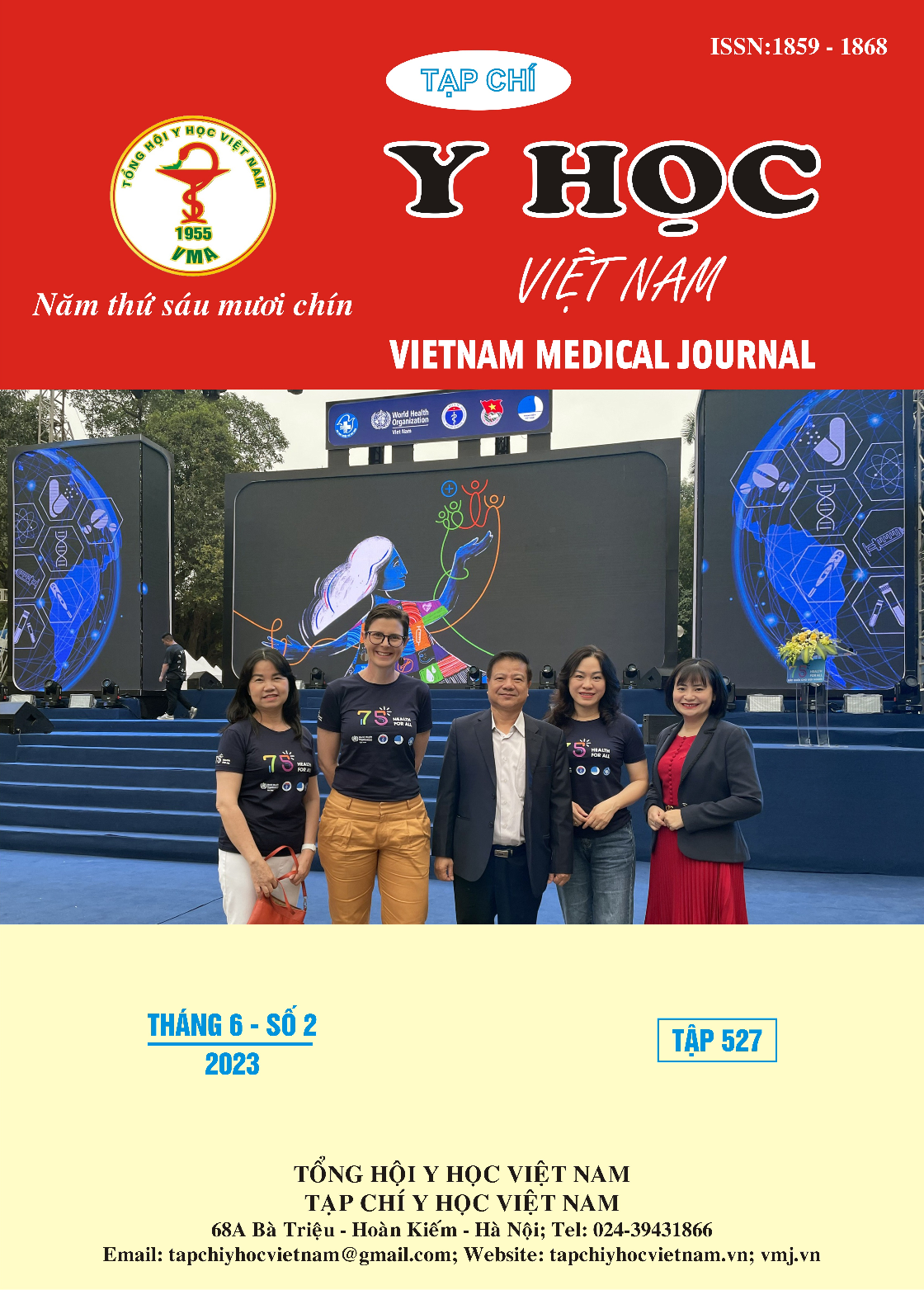THE INITIAL RESULTS OF CONTINUOUS CONTROL PROGRAM BECAUSE OF EXTENSIVE GENE MUTATIONS IN WOMEN OF REPRODUCTIVE AGE
Main Article Content
Abstract
Early diagnosis of congenital hearing loss helps to prevent adverse outcome and improve the quality of life in newborn babies. The implementation of screening program for hearing loss gene mutation not only allows to earlier detect this congential disorder and identify the essential etiology, but it also opens the opportunities for couples to determine the risk of disorders in their next generation as well as to set up effectively treatment plan. Through a survey of 586 genes in 100 reproductive age women (18-45 years old) who visited the University Medical Center branch 2, we obtained the frequency of mutations in the GJB2 gene or Connexin 26 protein with variant c.109G>A (p.Val371le) and c.235delC accounted for 13.6% (CI: 7.79%-10.2%). From the initial report results, the rate of people carrying recessive genes causing congenital hearing loss is quite high. This is the initial screening result, we will continue to report the screening results with a sample size of over 500 reproductive age women in Ho Chi Minh City.
Article Details
Keywords
Carieer Screening, Congenital hearing loss, Gene mutation
References
2. Beach, R., et al., GJB2 Mutations Linked to Hearing Loss Exhibit Differential Trafficking and Functional Defects as Revealed in Cochlear-Relevant Cells. Frontiers in cell and developmental biology, 2020. 8: p. 215-215.
3. Thorpe, R.K. and R.J.H. Smith, Future directions for screening and treatment in congenital hearing loss. Precis Clin Med, 2020. 3(3): p. 175-186.
4. Shearer, A.E., et al., Comprehensive genetic testing for hereditary hearing loss using massively parallel sequencing. Proceedings of the National Academy of Sciences of the United States of America, 2010. 107(49): p. 21104-21109.
5. Kelsell, D.P., W.L. Di, and M.J. Houseman, Connexin mutations in skin disease and hearing loss. American journal of human genetics, 2001. 68(3): p. 559-568.
6. Chan, D.K. and K.W. Chang, GJB2-associated hearing loss: systematic review of worldwide prevalence, genotype, and auditory phenotype. Laryngoscope, 2014. 124(2): p. E34-53.
7. Wu, C.C., et al., Newborn genetic screening for hearing impairment: a population-based longitudinal study. Genet Med, 2017. 19(1): p. 6-12.
8. Lin, Y.F., et al., GJB2 mutation spectrum in the Taiwanese population and genotype-phenotype comparisons in patients with hearing loss carrying GJB2 c.109G>A and c.235delC mutations. Hear Res, 2022. 413: p. 108135.


